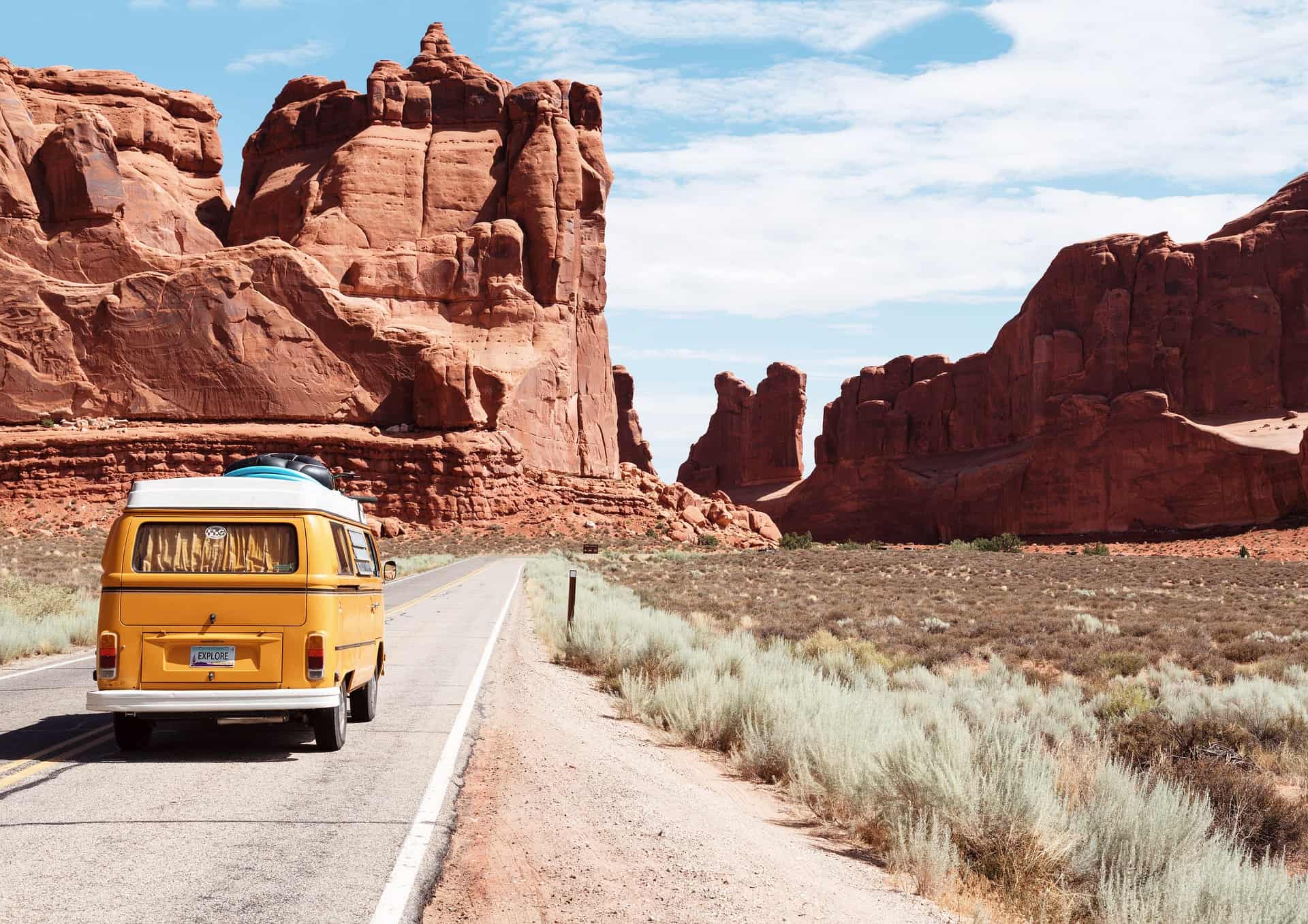What is a national park?
A national park is an area that a country has set apart to preserve its environment. The reasons that would encourage a government to preserve a particular natural environment will vary. In some cases, the goal is to create a recreational space for the public to enjoy. In other instances, the space in question has a scientific or historical benefit.
Either way, national parks are highly prized assets that contribute to a country’s social and financial well-being. To appreciate the role they play, you must understand where they come from and how they work.
What Are the Characteristics of a National Park?
What makes a particular stretch of land a national park? There are plenty of large acres of land in the US with plants and animals that no one has ever bothered to classify as national parks. What sets national parks apart?
Wikipedia has a page that lists the characteristics that the International Union for Conservation of Nature expects to see in a national park. Theoretically speaking, you can classify any space that has these attributes as a national park. They include the following:
- Parks should have one or more ecosystems that human beings haven’t altered through occupation and exploitation.
- They should have shockingly beautiful natural landscapes.
- They should have plants, animals, and sites with scientific, educational, and recreational value.
- The ruling government must have taken legal steps to prevent exploitation and occupation in the park.
- Despite the regulations governing human activity in the area, people are still allowed to enter certain conditions.
- The relevant authority should have assigned a sufficient budget and staff to the park to guarantee its management and protection.
- The government should have banned the extraction of natural resources.
If you consider the changes the IUCN made in 1971, a national park should be at least a thousand hectares.
What Are the Origins of National Parks?
A national park is a place where nature has been allowed to thrive alone, without the interference of man. It is a place where animals and plants of all breeds and species are protected from the destructive tendencies of humankind.
But where did the idea of protecting these diverse spaces come from? Believe it or not, national parks are a relatively recent invention.
From Wikipedia, you learn that William Wordsworth, an English Poet, used the phrase ‘National Property’ to describe the protections he wanted the Lake District in England to enjoy. He wanted the region to become a place that people could visit to appreciate flora and fauna.
That was in 1810. George Catlin, a painter, suggested in the 1830s that America’s Native Indians should be preserved in a park. He also used the words ‘Nation’s Park’ to describe the space that the Native Americans would occupy.
Documents in the Library of Congress will tell you that the concept of a national park as people understand it today was eventually innovated by the United States. Yellowstone gained its status as a national park in 1872.
It was the first of its kind, though it wasn’t the last. National parks became a prominent part of American life because changes in society’s social and economic fabric had given the population an appreciation for nature.
The number of people that wished to escape industrialized urban centers had also grown. They realized that the country’s most spectacular landscapes had to be preserved before they were exploited for their natural resources and eventually destroyed.
This explains the wave of articles and books about nature that flooded the market during this era. Authors like John Muir and Clarence Dutton mesmerized the public by producing literature that described the country’s awe-inspiring scenery.
As such, people welcomed the classification of Yellowstone as a national park. Decades earlier, the government had introduced legislation to protect certain sections of Hot Springs, Arkansas. In 1864, an Act of Congress that President Lincoln signed prevented private individuals from owning land in the Yosemite Valley as well as the Mariposa Grove.
This monumental development led to a furious debate as certain voices questioned whether the government had the legal right to create such protections for places like Yosemite Valley. This did little to prevent Yellowstone from receiving the protections that eventually came in 1872.
Though, because California was criticized for mismanaging Yosemite, Yellowstone became a national asset controlled by the government. This did not end the debates surrounding the relevance and legality of national parks.
Though, by the time the National Park Service came into existence in 1916, most people had grown to accept the concept. Today, you can find national parks in over two dozen states around the country. The public appreciates them as a source of education, recreation, and preservation.
What Are the Objectives of National Parks?
What are national parks expected to do? Well, their objectives might vary depending on the location. But according to Jagran Josh, this is what you can expect from most of them:
- National parks will conserve a wide range of plant and animal species, not to mention migration routes and ecological processes.
- You can trust them to maintain an area’s natural state, not only the natural processes but the biotic communities
- They create a space that the public can use for education and recreational purposes.
- They will contribute to the economy through tourism.
National parks achieve these objectives and more by creating systems that prevent people from living and grazing livestock in protected areas. They also prohibit the removal or destruction of wildlife. Most states have strict laws that punish people who take actions that bring harm to protected areas.
What Are the Best but Least Crowded National Parks?
The video below will show you every single park in the US in less than a minute. And based on the beauty and variety you see in that video, you probably think that decent national parks are relatively easy to find.
But that isn’t necessarily true. Yes, the US is brimming with beautiful parks. People come from all over the world to see them. According to National Geographic, an impressive 14 billion people have visited America’s national parks since 1904.
While that is obviously good for the country, it isn’t right for you if you don’t like crowds. The most popular parks are a nightmare for people that want a little peace and quiet. Fortunately, there are plenty of parks in the US that can guarantee the tranquility you desire, including:
Voyageurs
Have you been to Minnesota? If not, you should visit if only to see Voyageurs national park. Because a large chunk of the park is underwater, the best way to tour the park is to rent a water vessel such as a kayak or a canoe. You can camp and fish to your heart’s content. No one will bother you. The park doesn’t attract large crowds.
Dry Tortugas
The Guardian has nothing but good things to say about this park in Florida. It has a fort (Jefferson) that was built by enslaved laborers centuries ago, though it wasn’t finished. Besides walking through the fort and admiring the historical designs, there isn’t much to do at this park.
This is the place to visit if you want to fish, read, sit, sleep, or stare. It is a quiet, contemplative place that will put you at ease.
Grand Staircase
Everyone should visit the Grand Staircase monument at least once. Utah’s untamed landscapes are quite breathtaking. The red rock is difficult to forget. The Grand Staircase Escalante monument is probably the most memorable aspect of Utah’s landscape. It attracts a lot of visitors, but the crowds are not big enough to become a hindrance.
Wrangell-St Elias
You have to go to Southern Alaska to see this park. But the trip is worth it. Expect remote mountains and ice fields. There are glacial rivers and alpine valleys to see. You can backpack, river-raft, and walk. Whatever you do, you will never forget the experience. Because the place is so remote, you don’t have to worry about people invading your isolation.
Manassas
Manassas in Virginia hosted two crucial Civil War Battles. The National Battlefield Park will transport you centuries into the past. It attracts school children and families. There are long trails to hike if you like the challenge. The park isn’t as well known, which is why it doesn’t attract quite as many visitors as other places in the country.
Conclusion
National parks play several roles. Some people use them to study rare flora and fauna. Others use them as camping grounds. Most people appreciate their beauty. Even though some people fought the government when it first attempted to create them, national parks have become a vital and irreplaceable asset to the country. They are places where nature can flourish unimpeded.


